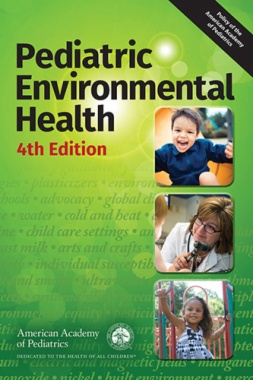Significantly revised and updated, the fourth edition of this popular AAP policy manual helps you identify, prevent, and treat pediatric environmental health problems.
This comprehensive guide puts critical children’s health information and answers to parents’ questions at your fingertips. From asbestos to radiation, ultraviolet rays, pesticides, asthma, lead, tobacco, and child care and school environments—current information on an exhaustive range of environmental health issues is included.
Most chapters on chemical and physical hazards are organized in sections that describe the pollutant, routes of exposure, systems affected, clinical effects, diagnostic methods, treatment, and prevention of exposure and include suggested responses to questions that parents may ask.
TOPICS INCLUDE- Addressing Environmental Health in Primary Care
- Food and Water
- Chemical and Physical Exposures
- Public Health Aspects of Environmental Health
- Emerging Technologies
- And more

